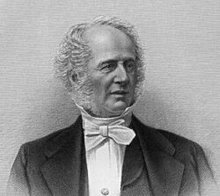Let's start by analyzing the arguments. The detractors will say, and I too have worried, that CKS underachieved with his 2011-12 Commodores and that it will take a long time for us to reach any kind of relevance again. These folks will point out the following:
As to underachivement:
- That roster had 7 Top 100 players by nearly every scouting service account.
- It was the 24th oldest roster in the country, per KenPom.
- That it had 3 NBA draft-picks, and two first-rounders.
- The team loses a vast majority of its scoring and none of the guys on the team have shown they are ready to shoulder the load.
- Stallings has whiffed on numerous elite level recruits, as well as mid-level recruits, since 2010.
As to heights never before experienced:
- Vanderbilt has been the third-winningest program by win percentage in the SEC, behind only Kentucky and Florida, over the past four seasons (they are tied with Tennessee for win percentage in conference).
- We won an SEC Tournament Title for the first time since 1952.
- Our five tournament appearances in six years is the best in the history of the program.
- There are still six top 150 players and 3 top 100 players on this roster.
- Of the group of top 150 players, there are two juniors (Fuller, Odom), 3 sophomores (Siakam, Johnson, Parker) and one freshman (Jeter). And then there's Kevin Bright, who could be Stallings latest international gem.
- Next year, with the addition of Damian Jones, there will be four top 100 and seven top 150 players on the roster. Furthermore, Jones is exactly what Stallings missed out on last year (aside from Poythress, who was not replaceable by anyone if you saw him play against Duke last night), a big body in the post.
This is a consistent problem Vanderbilt must deal with as the smallest institution in the SEC. Our rosters have to be compared to Kentucky & Florida, and now Arkansas, Tennessee, Alabama, Texas A&M and Missouri. However, with the exception of Kentucky, Florida, and Missouri, all other programs have underachieved greatly, and to a much larger extent than Vanderbilt given the talent collection at each. Look at teams like LSU and Auburn on that front as well, who have pulled in high-level talent in recent years and have done absolutely zero with it.
As Vanderbilt fans, we love to justify our membership with the rest of the SEC, and rightfully so as one of the founding institutions who has become more than competitive in every major sport. The thing that separates us from these other schools, however, is that our "brand" is not as historically marketable. It wasn't but 10 years ago that Vanderbilt was struggling to find success in any of the three major sports. In fact, it was completely fair to associate Vanderbilt with "easy win." Is it honestly fair to say that Stallings has failed as a coach because he hasn't won as many championships or recruited as well as say, Kentucky? Or Florida? Or even Tennessee for that matter? Each of those programs have name recognition that Vanderbilt couldn't have fathomed until about 6 years ago. Even still, Vanderbilt is rising from pretty amazing anonymity in the college sports ranks.
That's not a justification for underperformance. Coaches at other schools have been dismissed for less performance than Stallings had with the 2011-12 squad. But it is to say that the future might not be as bleak as it may seem. Interestingly enough, I think John Calipari has explained a very simple principle about college hoops: you're only as good as your next recruiting class. However, for programs like Kentucky with significant college basketball branding, they have the capability to reload each year. Their dips are very quick. Calipari likes to say that his 2009 Wildcats were a "watershed" class for Kentucky, with 4 first-round draft choices that begat future success.
Stallings has a different strategy based on a similar principle: you're only as good as the team you can assemble every 4 years. Why are the 2008 Commodores not a "watershed" class for Vandy? While their efforts might not bear fruit as quickly, the program could be on track for yet another big class in a year or two. This is especially true as the Vanderbilt brand gains more notoreity (another reason to give James Franklin whatever he wants). The interesting thing is, Stallings has pieced together a talented roster right beneath our noses, and he's done it without just offering willy-nilly. He's left those rolls of the dice open for future classes. When you think about it, it's incredibly calculated. Perhaps we as Vanderbilt fans are a little too focused on the trees and not enough on the forest. Perhaps the program just isn't at a point yet where we can recruit and pitch ourselves the same way as the rest of the SEC.
If that's the case, then two things become important: (1) winning with our underrated talent over the next couple of seasons, and (2) evolving our message to potential Commodores. We aren't just the best academic institution in the SEC anymore. We are the best academic institution, in the best city, with the potential to build greatness in our athletic programs. That is essentially the James Franklin message, and that needs to get imposed on our basketball program, which is far ahead of even our burgeoning football program in terms of success. As our marketing and brand grows, so will the quality of the recruits, and that is something that Stallings has to evolve if we're going to achieve greatness with the basketball program.











4 comments:
Fuck yeah. People always count us out in the preseason, and yet some how we're always in the thick of things come March. . .
The fact that the Wisconsin game came down to a three point shot taken and missed by our best player should be factored into this discussion. If we'd gone to the Sweet 16 last year, the Stallings doubters would be fewer.
What we need is to define our success and reach out. Making the tournament should be an annual given. Making the next step from there should be our program's next goal.
This is a family blog, Literaryman.com.
Read an excerpt from the beginning of Great Expectations, Charles Dickens' classic tale.
Chapter 1
My father's family name being Pirrip, and my Christian name Philip, my infant tongue could make of both names nothing longer or more explicit than Pip. So, I called myself Pip, and came to be called Pip.
I give Pirrip as my Vandymania screen name, on the authority of his tombstone and my sister—Mrs. Joe Gargery VandyLance, who married the blacksmith. As I never saw my father or my mother, and never saw any likeness of either of them (for their days were long before the days of photographs), my first fancies regarding what they were like, were unreasonably derived from their tombstones.
This is a literary blog, family man
Great web site! It looks extremely good! Sustain the great job Viagra Generic
Post a Comment